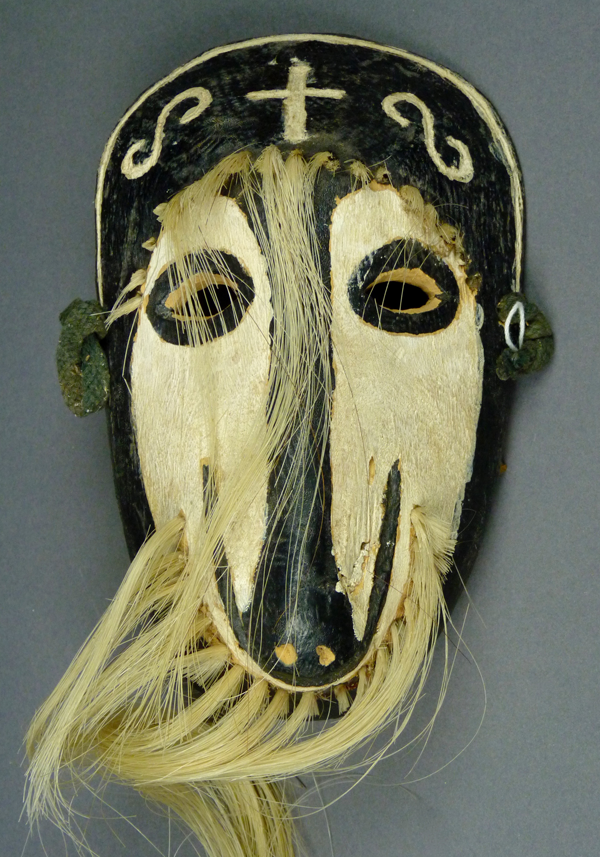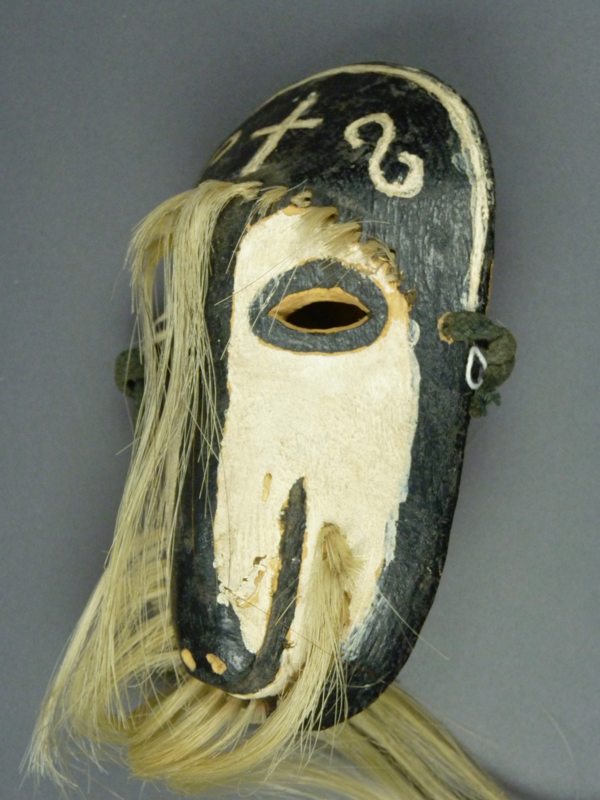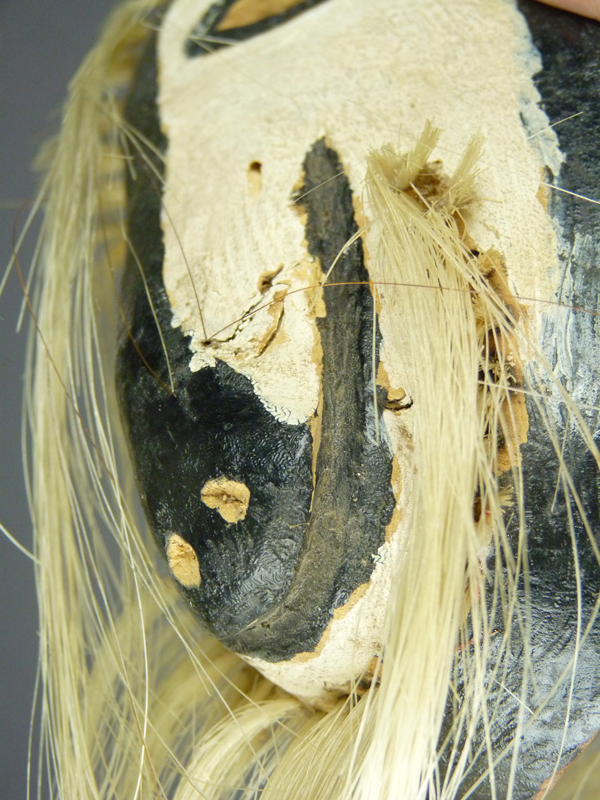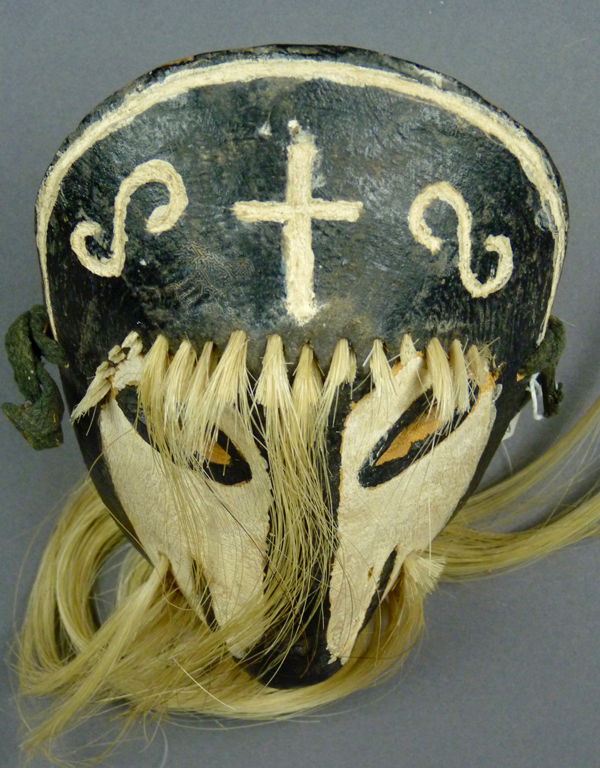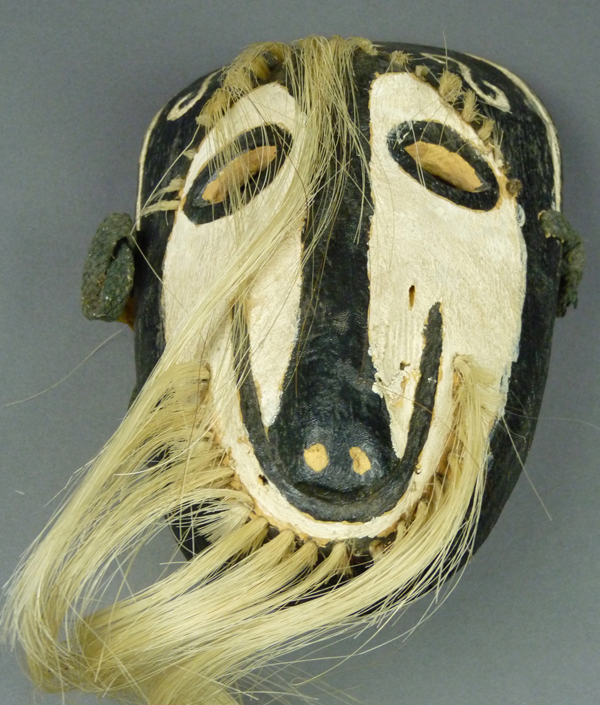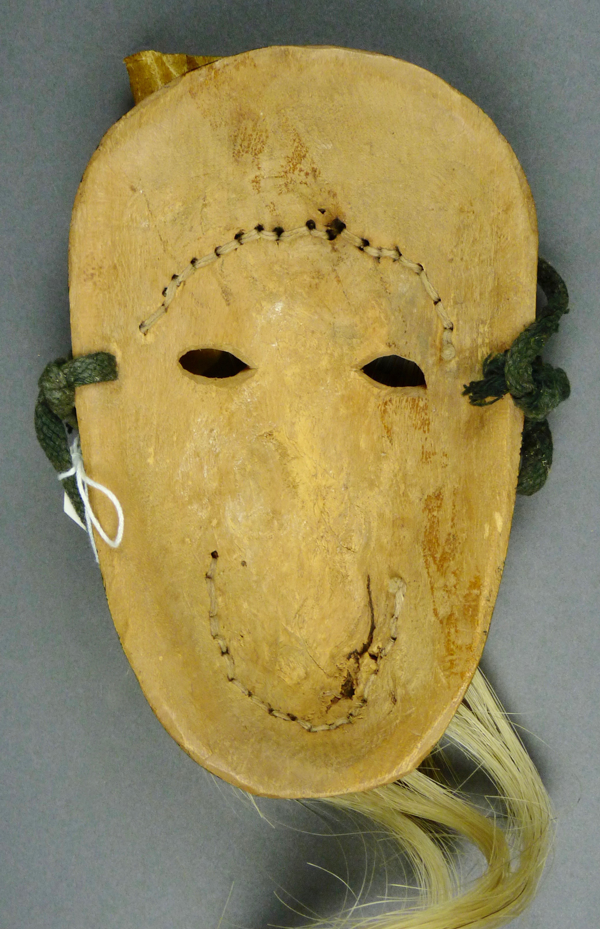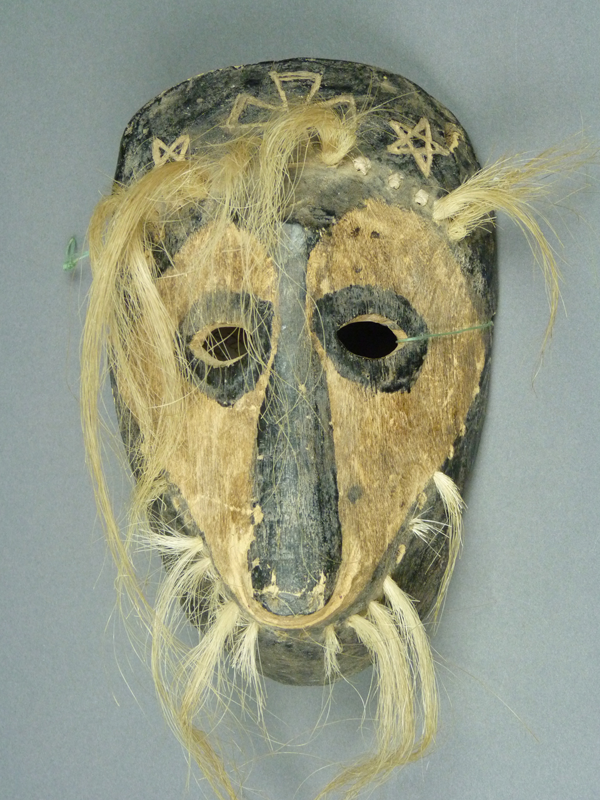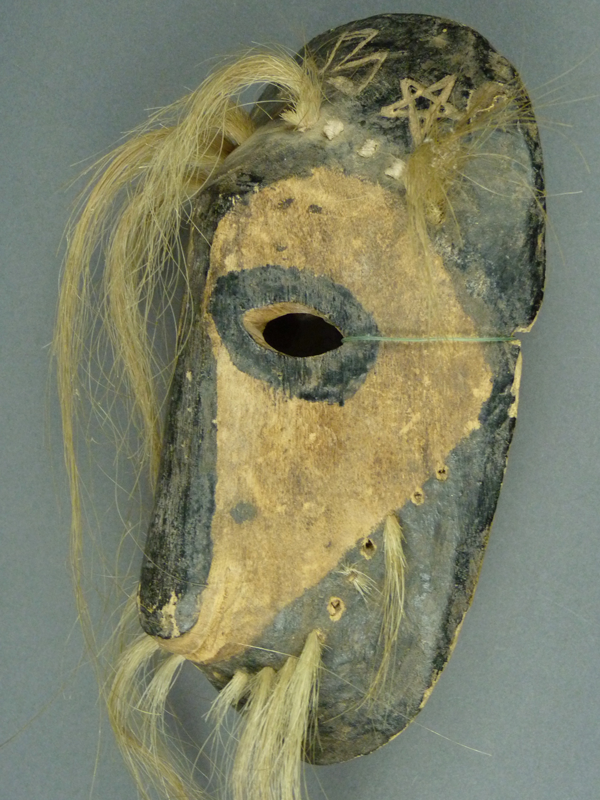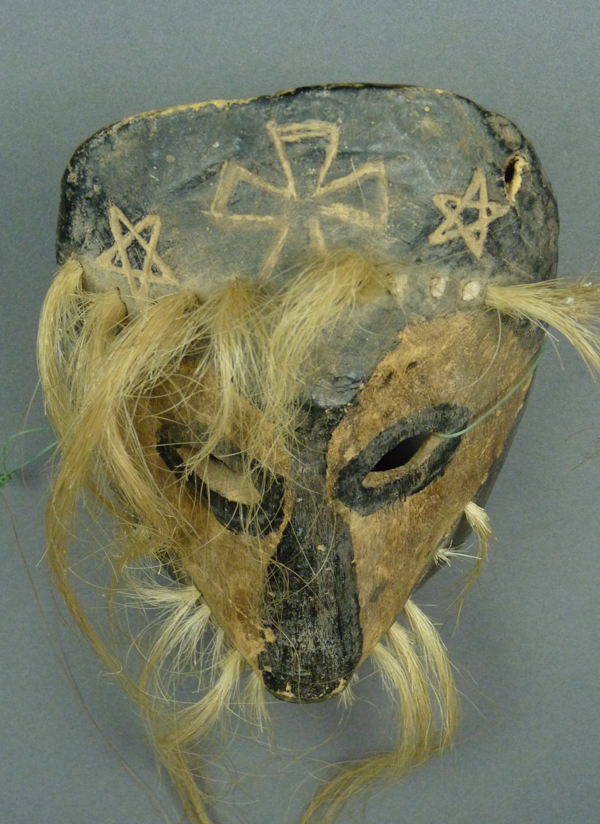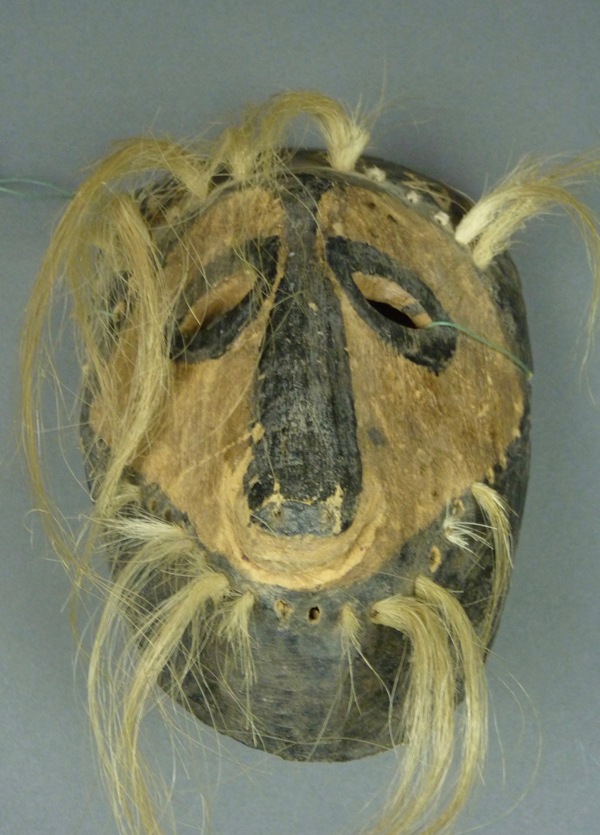In the collection of Barney Burns and Mahina Drees there are two Sinaloa Mayo masks that are said to have been carved by Justiano Bacasequa. I have no masks by that carver in my collection, but I do like the classic Rio Fuerte style of this pair.
Here is the first mask by Justiniano. The date of collection was not recorded. We do know that it was danced for 14 years, and at the time of collection Justiniano was 70 years old.
By now you are familiar with the tendency among the Sinaloa carvers of painting and/or inscribing designs that flank the forehead cross. Commonly one finds stars (or even shooting stars), scorpions, lizards, or flowers; these S shaped designs are less common, but attractive. Do they represent snakes?
The mouth was created by a simple carved groove.
A plain white band forms the rim design, as one often sees on Yaqui Pascola masks, but this band stops at the level of the eyes.
The hair was carefully stitched in place, and not pegged.
The back shows moderate staining from use.
At first glance, the second mask looks like the work of Guillermo Valenzuela, but on closer comparison this seems a doubtful attribution. Barney and Mahina thought this mask was more likely to have been carved by Justiniano Bacasequa. It was collected in January, 1999, after having been danced for at least 25 years.
I suppose that this mask always had a stained face with a painted black nose and rim. The face was painted before the hair was applied.
The edge has broken where there used to be a hole to attach the strap.
This pattern of inscribed stars flanking an inscribed cross is of course generic to the Rio Fuerte area.
There is a very plain carved mouth, just as on the other mask.
The back is as darkly stained as the cheeks, allowing one to suspect that the cheeks were originally neither stained nor painted. From the back we see that both edges were broken after long use.
Next week we will see masks by Francisco “Poncho”Acacia Estrella.
Bryan Stevens

